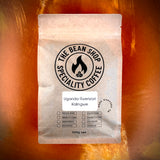-

12 Month Gift Coffee Subscription
-

3 Month Gift Coffee Subscription
-

6 Months Gift Coffee Subscription
-

A Christmas Coffee Gift - Americas
-

A Christmas Coffee Gift - South America
-

A Christmas Coffee Gift - The Connoisseur
-

Air Ambulance Charity SCAA Blend
-

Bean Shop Collection
-

Biscuit Blend
-

Blend 67
-

Blends Taster Box
-

Brazil Fazenda Da Lagoa
-

Bright Roast Blend
-

CHAS Charity Blend
-

Coffee of the Month - Honduras Comsa School Project Fairtrade Organic
-

Coffee of the Month Subscription
-

Colombia Cafe Sofia Supremo
-

Costa Rica Aquiares Natural
-

Decaffeinated Subscription
-

Espresso Blend
-

Ethiopia Yirgacheffe Dumerso Natural
-

Funky Subscription
-

Gourmet Blend
-

Guatemala Los Volcanes Todos Santos
-

Half-Caff Colombia Blend
-

India Monsoon Malabar
-

Kenya Kariaini AB
-

Kenya Kisii Peaberry
-

Light & Medium Roast Subscription
-

Medium & Dark Roast Subscription
-

Mexico Finca Guadalupe Zaju
-

Morning Blend
-

Mountain Water Decaf Honduras
-

Mountain Water Decaf Mexico
-

Nicaragua Las Nubes Pacamara
-

Old Brown Java
-

Origins Taster Box
-

Peru Tapir Andino Yellow Honey Fairtrade 100% Organic
-

The Bean Shop Blend
-

Uganda Rwenzori Kalingwe

Tie Guan Yin
£12.50



















































